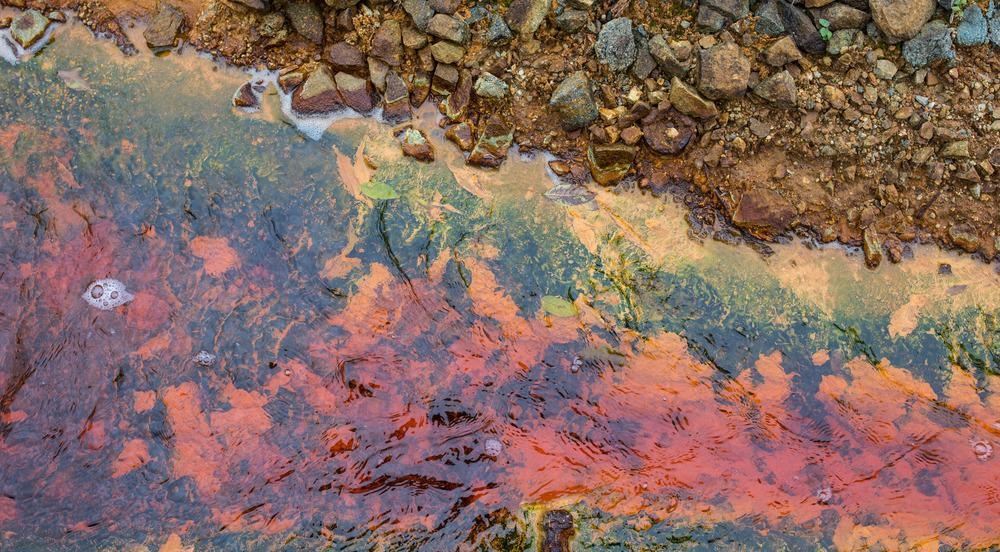The global mining industry has a significant impact on social and environmental systems in both direct and indirect ways. Mining waste is one issue that has great environmental costs. It poses a huge risk to human health, causes the loss and degradation of ecosystems, and exposes humans and the environment to dangerous radioactivity.

Image Credit: Martchan/Shutterstock.com
Unfortunately, mining waste management is not often discussed among the scientific community, agencies involved in mining, or policymakers. Here, we give an overview of why mining waste poses an environmental and health issue to be resolved with urgency, as well as presenting how cost-competitive mineral carbonation may provide a solution.
Current Challenges with Waste Management in Mining
In 2016, an estimated two billion tons of municipal solid waste was generated from residential, institutional, and commercial institutions. However, the mineral industry claimed first place as the world’s largest producer of waste. The total annual waste produced by mining operations is estimated to be a huge 50 times higher than that of municipal solid waste.
Although mining waste obviously poses a huge challenge, given its size and possibility of containing toxic and hazardous substances, there are few solutions being implemented to tackle it.
Studies have shown that a lack of integrated knowledge between parties involved, such as governments, companies, inspection agencies, and policymakers is partly to blame.
Another is that mining waste is different from municipal waste in that it is challenging to recycle. While much household waste can be recycled and food can be composted, waste from the mining industry contains substances that do not lend themselves to conventional, widely adopted recycling techniques.
Scientists believe they have found a solution that has the potential to significantly reduce the volume of mining waste entering our ecosystems each year.
What is Mineral Carbonation?
Mineral carbonation is the process whereby carbon dioxide (CO2) reacts with minerals containing metal oxide to form insoluble carbonates. It is a process that naturally occurs as part of the weathering process, with calcium and magnesium being the most commonly bound to minerals. As a benefit, the process is effective at pulling CO2 from the atmosphere.
Scientists have discovered that mineral carbonation can be sped up via the use of thermal and chemical engineering to obtain highly demanded carbonates and silica. Recent research has also revealed that synthetic biology can be used to speed up mineral carbonation. Therefore, scientists have many methods of enhancing the natural process and taking it into their own hands to leverage in multiple applications.
How Does Mineral Carbonation Help Deal with the Challenges of Waste in Mining?
The mineral carbonation process is cost-competitive and can be used to provide an attractive solution to tackling mining waste, as well as waste from other heavy industry sectors. Attacking mining waste via mineral carbonation also offers the benefit of reducing the carbon footprint of the industry by locking away some of the carbon associated with mining into carbonate-based products. The production of carbonates can convert mining waste into useful products while offsetting a fraction of the carbon emissions associated with mining.
Mine tailings, the waste materials that remain once the target mineral has been extracted from ore, can be used to fuel mineral carbonation. This reduces the level of waste generated by mining operations while producing a valuable product - the sale of which can help to lower the costs of mining operations including the integration of mineral carbonation operations.
Often, mine tailings contain calcium, magnesium, and sodium, all of which are suitable for mineral carbonation. To speed up the process, the tailings are laid out in thin sheets and are stirred to encourage CO2 exposure and accelerate the CO2 utilization process.
Australia’s mining industry is positioned well to benefit from integrating mineral carbonation processes into its mining sector to convert large quantities of mine tailings into feedstock for carbonation, and, therefore, into valuable carbon-based products.
Carbon-based products have a great deal of value across several industries. For example, mineral carbonation can be used to generate products such as the essential additives used in various products such as rubber and plastic products, paints, inks, and fire retardants.
They are also vital to water-absorbing applications and food applications. Mineral carbonation can also be used to help produce aggregates for use in building materials. Forming mineral carbonates from mine tailings can reduce acid mine drainage and immobilize environmentally hazardous metals.
The global market size for calcium carbonates (those produced by the mineral carbonation utilizing mine tailings) is estimated to be around $55,850 million. It is expected that mineral carbonation will be widely adopted to take advantage of this significant market, mitigate the carbon emissions associated with mining operations, and reduce the health and environmental impact of mining.
References and Further Reading
Agboola, O., Babatunde, D., Isaac Fayomi, O., Sadiku, E., Popoola, P., Moropeng, L., Yahaya, A. and Mamudu, O., 2020. A review on the impact of mining operation: Monitoring, assessment and management. Results in Engineering, 8, p.100181. https://www.sciencedirect.com/science/article/pii/S259012302030089X
Haddaway, N., Cooke, S., Lesser, P., Macura, B., Nilsson, A., Taylor, J. and Raito, K., 2019. Evidence of the impacts of metal mining and the effectiveness of mining mitigation measures on social–ecological systems in Arctic and boreal regions: a systematic map protocol. Environmental Evidence, 8(1). https://environmentalevidencejournal.biomedcentral.com/articles/10.1186/s13750-019-0152-8
Disclaimer: The views expressed here are those of the author expressed in their private capacity and do not necessarily represent the views of AZoM.com Limited T/A AZoNetwork the owner and operator of this website. This disclaimer forms part of the Terms and conditions of use of this website.